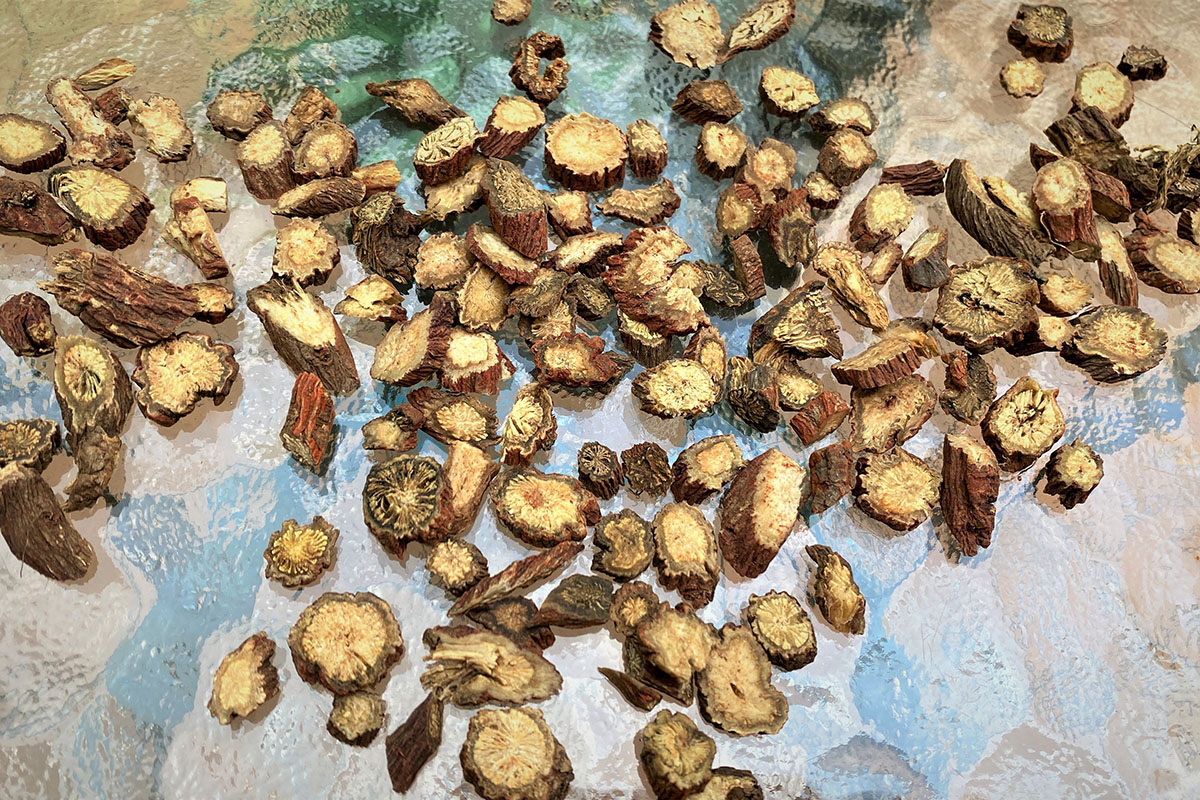News
Professor Jia Wei's team unveils a novel mechanism by which bile acid-microbiome interaction promotes gastric carcinogenesis
31 March 2022
A study led by Professor Jia Wei, Cheung On Tak Endowed Professor in Chinese Medicine and Associate Dean (International Collaboration) of Chinese Medicine, has proved the mechanistic role of bile acid-microbiome interaction in gastric carcinogenesis. The study revealed the deleterious role of refluxed bile acids and lipopolysaccharide (LPS)-producing bacteria in promoting gastric carcinogenesis and showed the potential therapeutic effect of Cryptotanshinone in attenuating gastric carcinogenesis induced by bile reflux. Results from the study provided a novel strategy for the prevention and treatment of gastric cancer (GC) associated with bile reflux gastritis (BRG). The related work has been published as a cover paper in the international scientific journal Advanced Science.
Bile reflux gastritis is closely associated with precancerous gastric lesions
Bile reflux promotes the development of precancerous gastric lesions but the exact mechanism remains elusive. Using an ultra-performance liquid chromatography coupled with a triple quadrupole mass spectrometry (UPLC/TQMS) based targeted metabolomics approach, the research team measured the bile acid profiles of the gastric juice samples among control, BRG and GC groups. The results showed that the total bile acids, especially conjugated bile acids, including glycocholic acid (GCA), glycochenodeoxycholic acid (GCDCA), glycodeoxycholic acid (GDCA), glycoursodeoxycholic acid (GUDCA), taurocholic acid (TCA), taurochenodeoxycholic acid (TCDCA), taurodeoxycholic acid (TDCA), and tauroursodeoxycholic acid (TUDCA), were significantly elevated in patients with BRG and GC. They further identified a strong positive correlation between the TDCA levels and pH value of human gastric juice in both BRG and GC patients.
Conjugated bile acids increase the abundance of LPS-secreting microbiota in the gastric compartment and promote gastric carcinogenesis
Previous studies showed that bile acids refluxing into the stomach were closely related to chronic inflammation. The research team first evaluated the levels of pro-inflammation cytokines in the gastric juice of BRG and GC patients and found that the concentrations of pro-inflammatory cytokine and LPS-producing bacteria were significantly increased in BRG and GC patients. They then performed both in vitroand in vivo experiments to decipher the mechanism through which bile reflux promoted precancerous gastric lesions. Their in vitro study found that TDCA and LPS promoted gastric epithelial cell proliferation while their in vivo study discovered that both TDCA and LPS induced gastric inflammation in mice. The findings of their studies further suggested that TDCA and LPS stimulated gastric inflammation and gastric carcinogenesis by activating the IL-6/JAK1/STAT3 signalling pathway.
Cryptotanshinone derived from Salvia miltiorrhiza attenuates bile reflux-induced gastric precancerous lesions
Cryptotanshinone is a bioactive natural product extracted from the roots of the Chinese medicinal plant Salvia miltiorrhiza that specifically inhibits STAT3 signalling. By administering Cryptotanshinone to the bile reflux mouse model, the team demonstrated that Cryptotanshinone could significantly attenuate bile reflux-induced gastric precancerous lesions.
The study led by Professor Jia has not only uncovered the underlying mechanism that explains how bile reflux promotes gastric carcinogenesis, but also identified an effective therapeutic and preventive solution to clinical intervention in BRG and BRG associated GC. The mouse model established by the team to mimic the clinical phenotypes of BRG can also be used for investigating the role of other metabolic signalling pathways in BRG.

